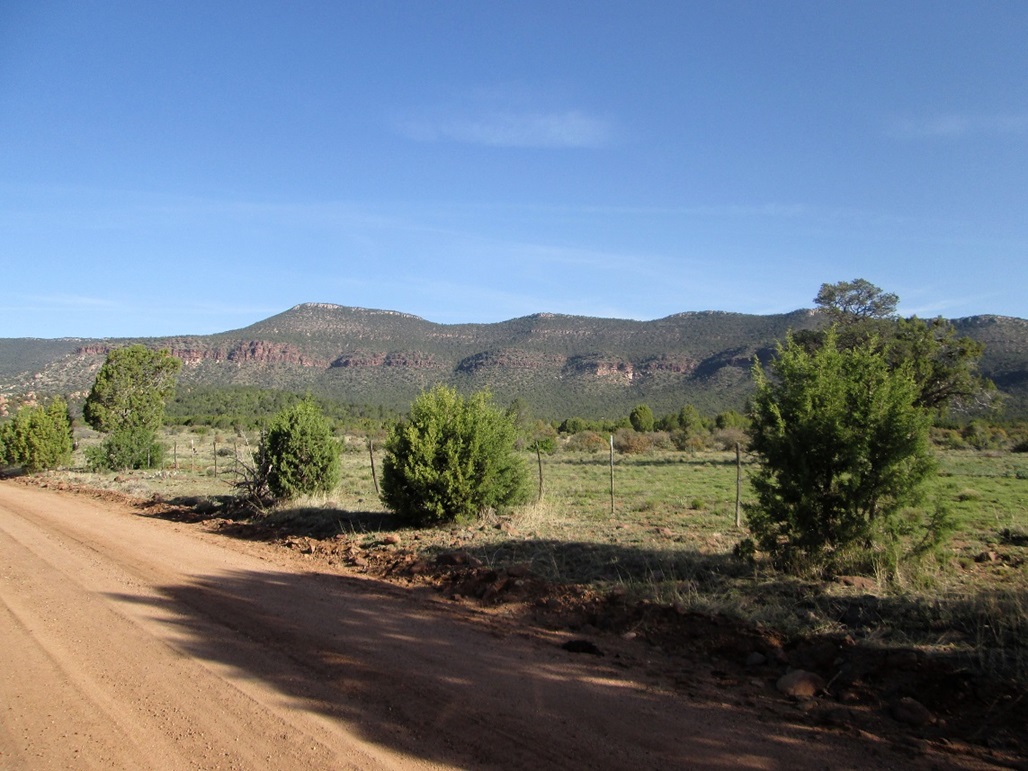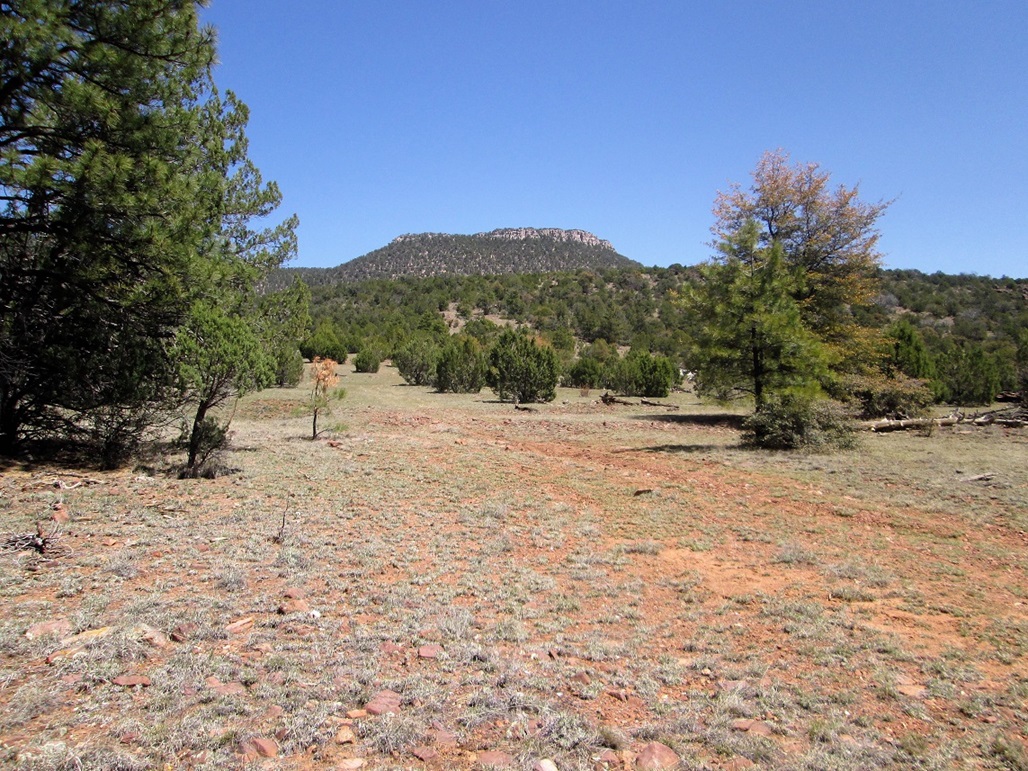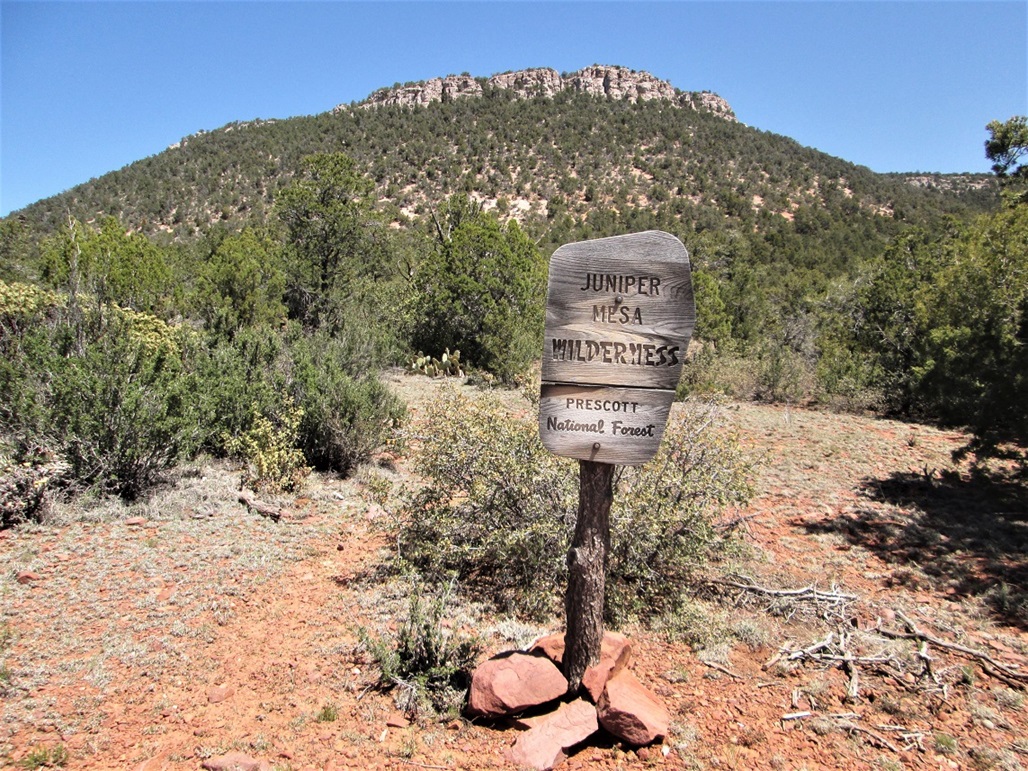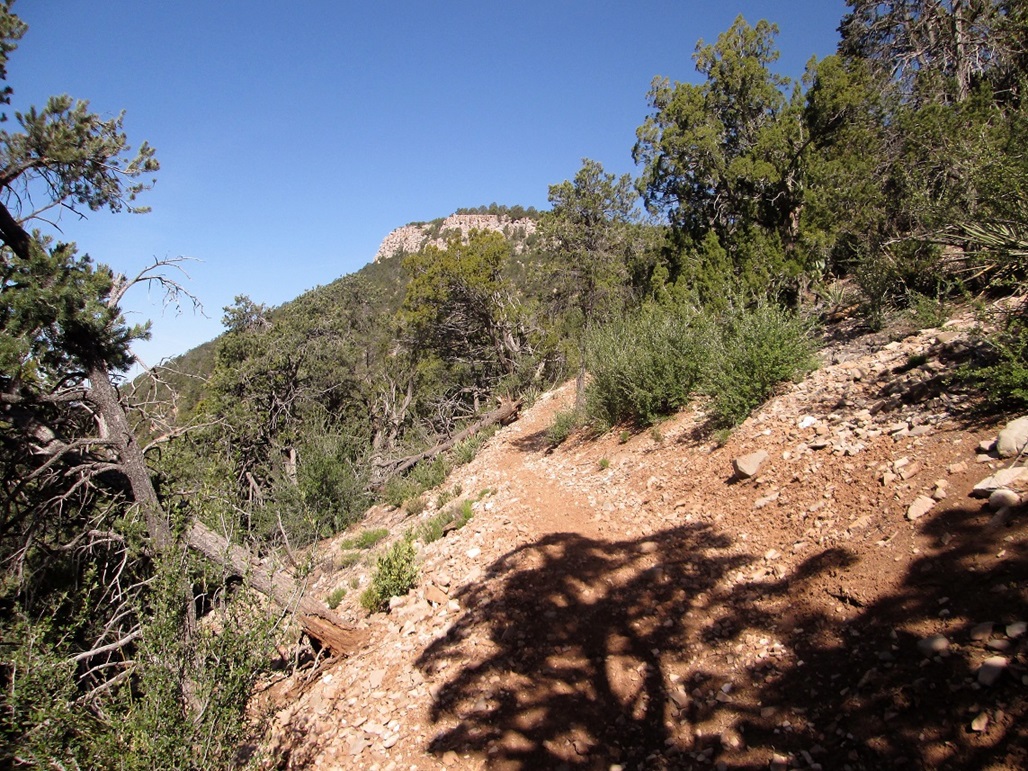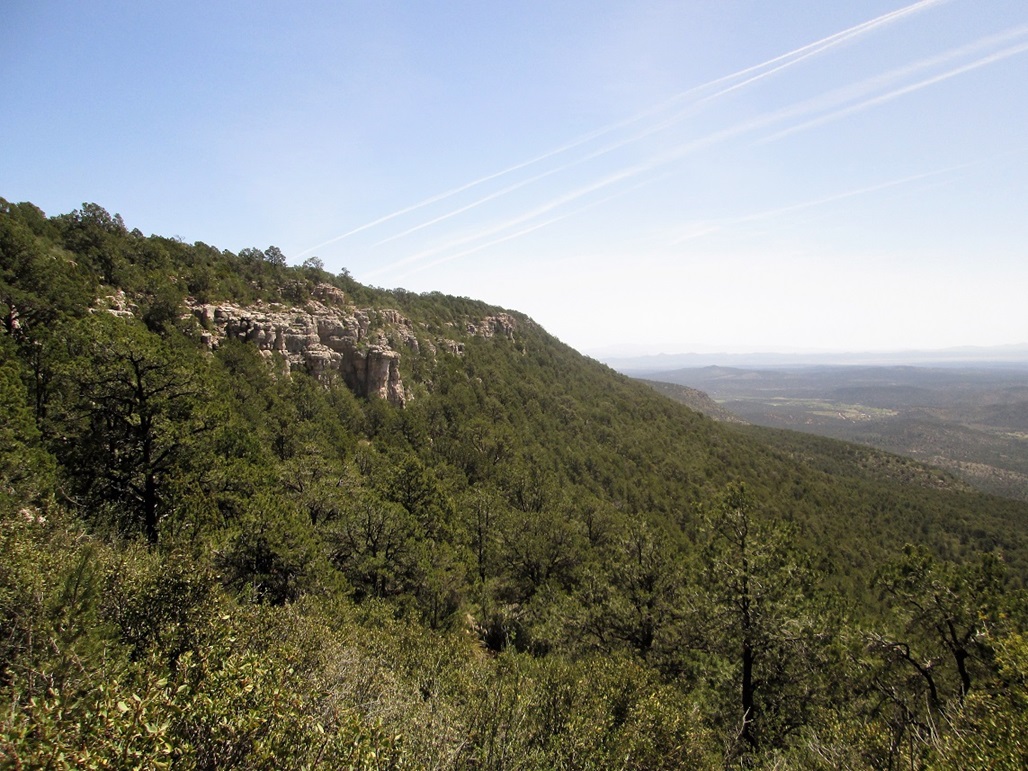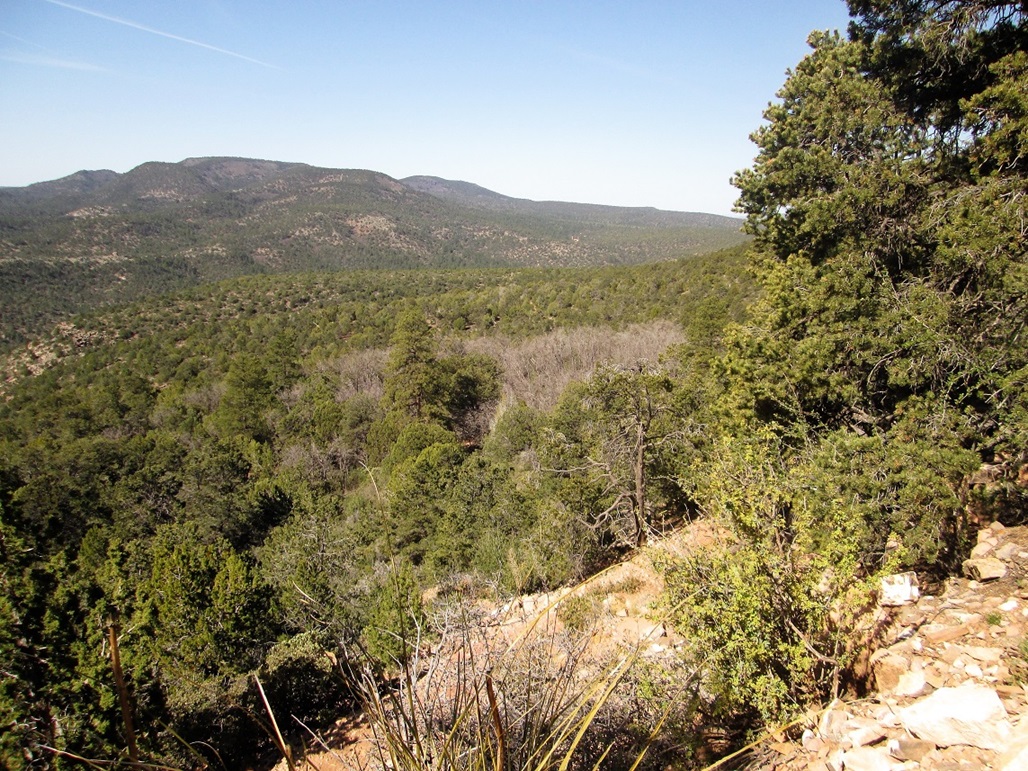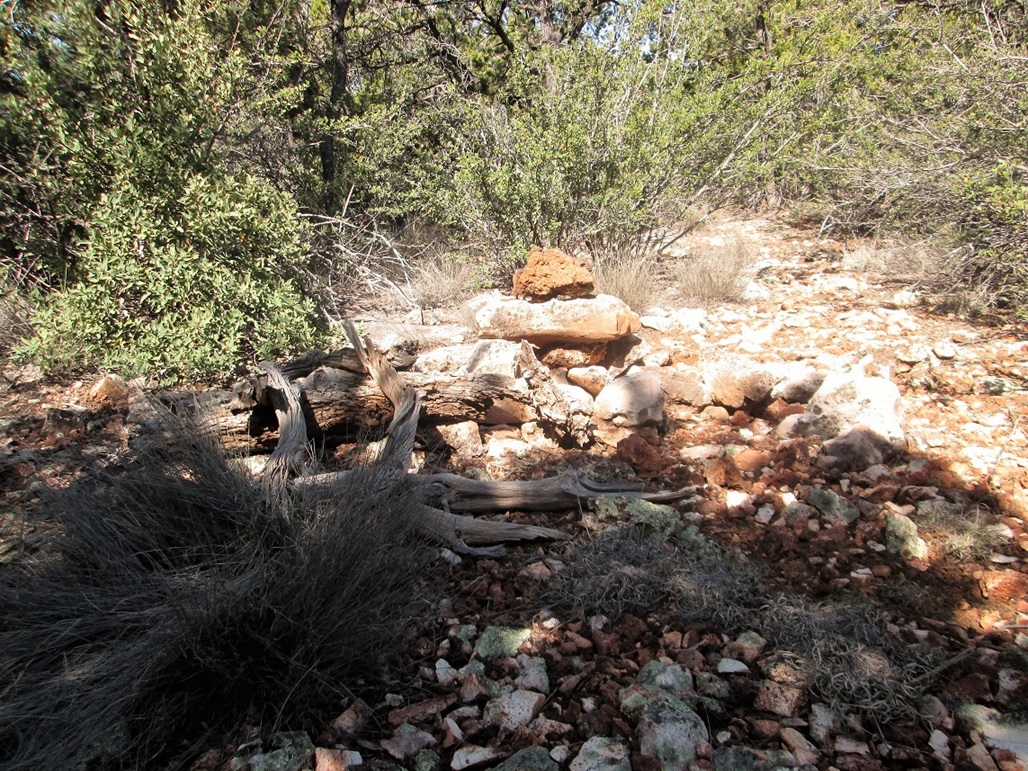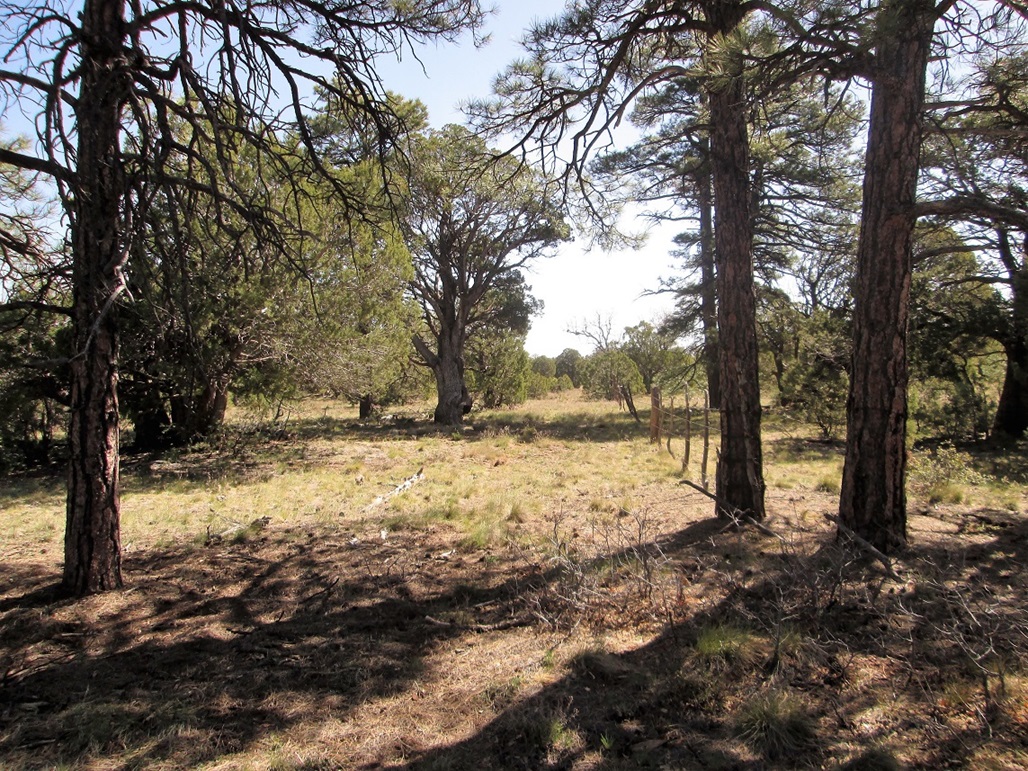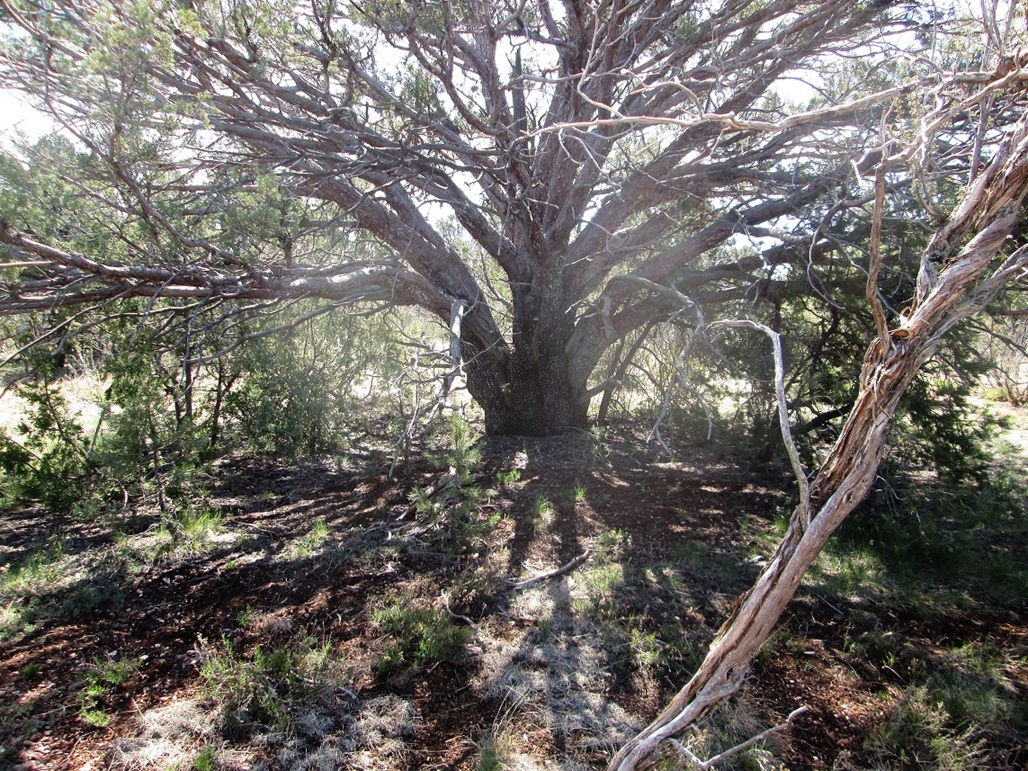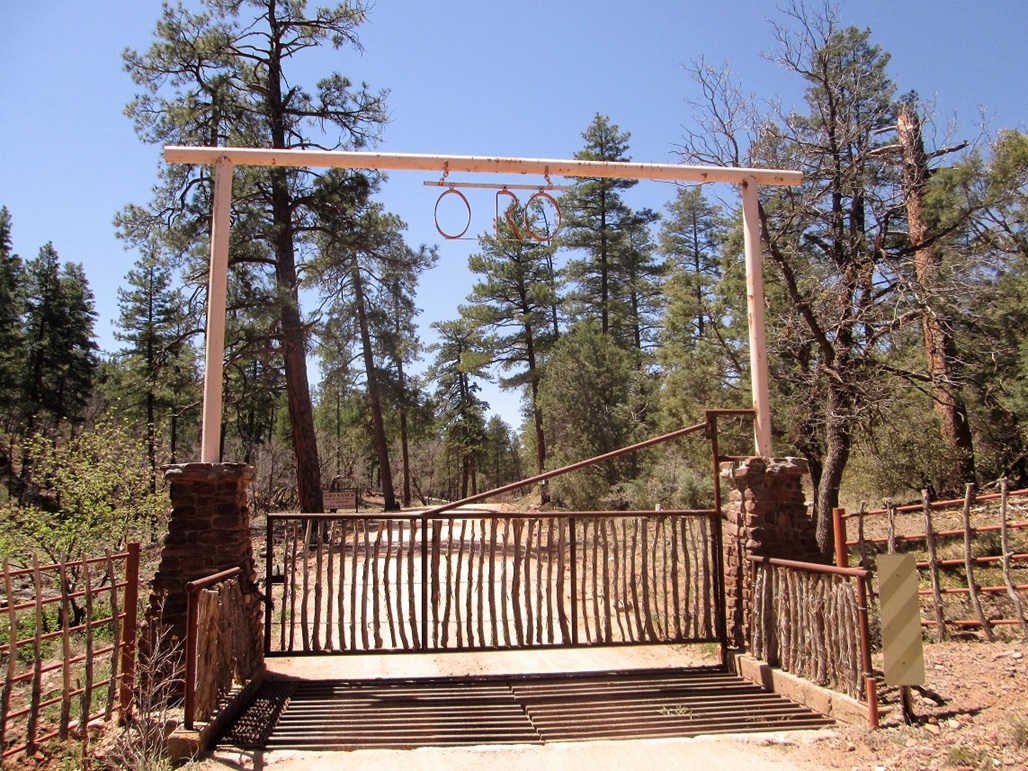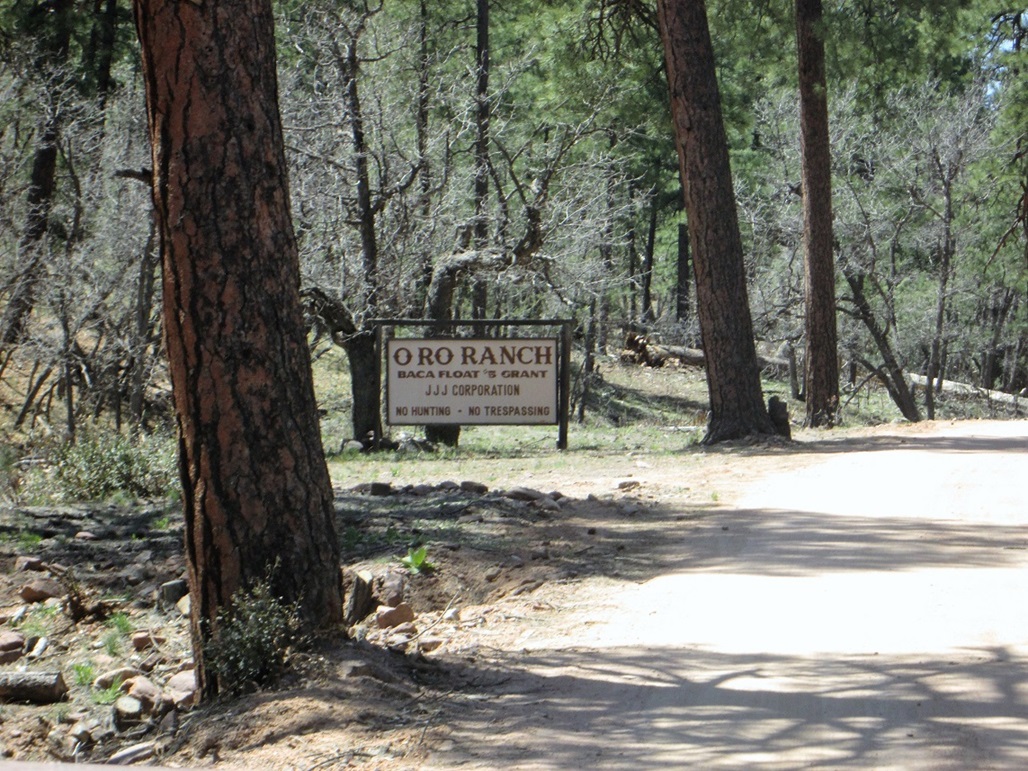
The Mountains of Arizona
• www.surgent.net
|
| Juniper Mesa |
• Highpoint: Juniper Mountains • Juniper Mesa Wilderness • Prescott National Forest • Yavapai County |
|
Date: April 15, 2017
• Elevation: 7,081+ feet
• Prominence: 849 feet
• Distance: 6.4 miles
• Time: 3 hours and 30 minutes
• Gain: 1,220 feet
• Conditions: Blue skies and warm
• Teammate: Scott Peavy
Arizona
•
Main
•
PB
Scott proposed Juniper Mesa for this weekend's objective, and since it had a trail and he was driving, I was immediately interested. This "peak" is about 45 miles northwest of Prescott in the Juniper Mountains, which lie partially on Prescott National Forest land and partly within the Baca Float (O RO Ranch). Being a mesa, the tops are long and flat, apparently a remnant of the edge of the Colorado Plateau, which has weathered away back north now by about thirty miles.
Scott picked me up at the Denny's along the Carefree Highway at 6 a.m., and drove us into Prescott. There was no traffic, and it was surpringly cold, in the 30s, as we passed through town. In downtown, we got ourselves onto Williamson Valley Road (don't ask me to explain how we did that), and headed northwest. Williamson Valley is a long and broad valley home to a few ranches and smaller subdivisions. The forest is light, mostly pinon and juniper woodlands and big meadows, and very lovely. Twenty-two miles later, the pavement ended at the junction with Camp Wood Road, which goes left. We stayed straight.
The road was now hardpack and well-maintained so that we could keep up a reasonable speed. Slowly, the terrain gets hillier and slightly more forested. Then the road drops about 200 feet toward Walnut Creek, crossing a truss bridge below Indian Peak, coming to another junction. We had driven 14 miles from the end of the pavement. A right continues north toward Seligman and Interstate-40. We went left, now on Walnut Creek Road. By now, the Juniper Mountains were in view, fronting Walnut Creek Road on the north.
The road passes through a couple small ranches (such as the K-4), and eight miles after the last junction, we came to the first of two "trailheads" as printed on the topographical map. The eastern one leads to Bull Spring, while the western one heads north up George Wood Canyon. Scott backed onto a patch of rock and grass and killed the engine. It was just before 8:30 and we had driven 44 miles from downtown Prescott to get here. The weather was fantastic, the temperature about 60 degrees, with blue skies and a few high clouds.
We got dressed for the hike, locked up the vehicle and started walking at 8:30, following this "path" in a few hundred feet. It's a road for a short ways, then a faint track in the grass, then nothing. So we walked up hill anyway and soon found a proper trail. This trail gains moderately steeply up a slope though scattered pinon and juniper onto a flat bench. The trail itself was rocky and not always distinct. Cairns were placed in a few places.
The trail then angled left toward a prominent wall of white cliffs, this being the western highpoint of the mesa. We soon passed the Wilderness boundary, and stayed on the trail as is angled slightly right, aiming for Bull Spring. The forest closed in a little, and suddenly, we were in a patch of oaks. We were at the spring. To here, we had covered 1.3 miles and gained about 650 feet in about 40 minutes. We stopped to rest here.
The topographical maps show no trail here, but there is, Trail #100. It goes uphill from the spring, swings right and level for about a hundred yards, then a sharp left and steeply uphill all the way to the mesa rim, about 500 feet above us. This segment covered less than a mile and went fast, but it was steep in spots. Still, it was a good trail, certainly preferable to a bushwhack-scramble up these slopes.
Quickly, we were atop the mesa, at the junction with Trail #20, which runs along the length of the mesa. Two areas enclosed within 7,080-foot contours atop the mesa contend for the highpoint: the eastern bump has a spot elevation of 7,081 feet, and the western area has no spot elevations. On the map, the two areas are about the same size. We were mere feet from the western area, so we went there first.
We weaved through the trees and bushes, and soon found ourselves near the rim where we had excellent views. A rock cairn sits near what may be the highest point, and we signed into the log, the first since Andy Martin in 2015. Then we hiked back to the trail, this side trip taking about 15 minutes.
The eastern area was 1 mile away. We followed the trail and kept up a good pace. In 20 minutes, were were at this eastern area, Scott's GPS confirming that. We then walked into the "high" area but found no markers. We checked out the rim itself, and also looked for any cairns, but saw no evidence anyone else had been here. I took a photo of a big multi-trunked alligator juniper. It was as good a spot as any. We then rested again, this time for about 20 minutes. This was our "summit" break.
The forest here was open but also thick with junipers, pinon and segments of ponderosa pine, and lower to the ground, cactus, agave and other desert plants, a cool mixing of the two major ecosystems. The hike back to the trail junction went well... except for the two minutes where we simply lost the trail. We found it quickly enough, but how we lost it, I don't know.
With gravity working with us now, the hike down went fast. We walked the whole 2.1 miles back to Scott's car in one push, taking about an hour. Lower down, we stayed on the trail and sensed it did not look familiar. So we bailed and headed south through the open meadows and quickly found our path from this morning. We were back at noon, a 3-hour, 30-minute hike covering a little over 6 miles.
We were just a mile from where Walnut Creek Road dead ends at the eastern locked gate of the big O RO Ranch, this being the main portion that encompasses the Baca Float #5 Spanish land grant. This 12-mile by 12-mile patch of land has always been in private hands, going back to the original Spanish landowners, and has never been surveyed as part of the United States Public Lands Survey. These days, it's run as the O RO Ranch, one of Arizona's biggest and most reclusive. No one gets onto the O RO unless they have business there.
Anyway, I thought it would be cool to see what the East Gate looks like. The drive went fast. We drove by the second trailhead, the one marked as George Wood Canyon. This is a much better trailhead and this is where the trail was heading when we sensed we were not recognizing things. In retrospect, this is a far preferable place to park and start the hike than where we started.
So we got to the gate. Signs before the gate mention "locked gate" and "turn around at the trailhead", things like that. The gate itself is well done, a much more stately gate than the usual ranch gates one sees. We were expecting armed O RO security sentries to descend upon us at any moment, but nothing happened. All was still. So we took photos of the gate, and I even stuck my right arm over the gate, allowing it to trespass for about two seconds.
Sufficiently amused forever about what the East Gate of the O RO looks like, we got back into Scott's car and drove back the 23 miles to where the pavement resumed. But we were only on the pavement for a few moments, as we turned right (west), onto Camp Wood Road and the second objective of the afternoon, Connell Mountain, a small bump in the forest, but a range highpoint, which is why we even looked at it in the first place. I give Juniper Mesa high marks. The hike was fast and fun with lovely views in a very remote and lightly-visited part of the state. Scott's GPS gave a higher reading for the western area, by about 15 feet (7,098 feet for the western area, 7,083 feet for the eastern). There was some noticeable "up" in that western area, but I would still encourage future hikers who want "the top" to visit both areas, since the hike is worth it. |
|
